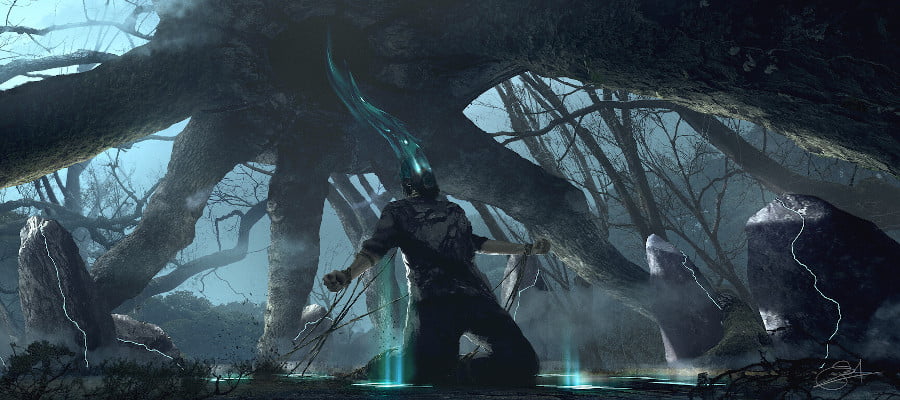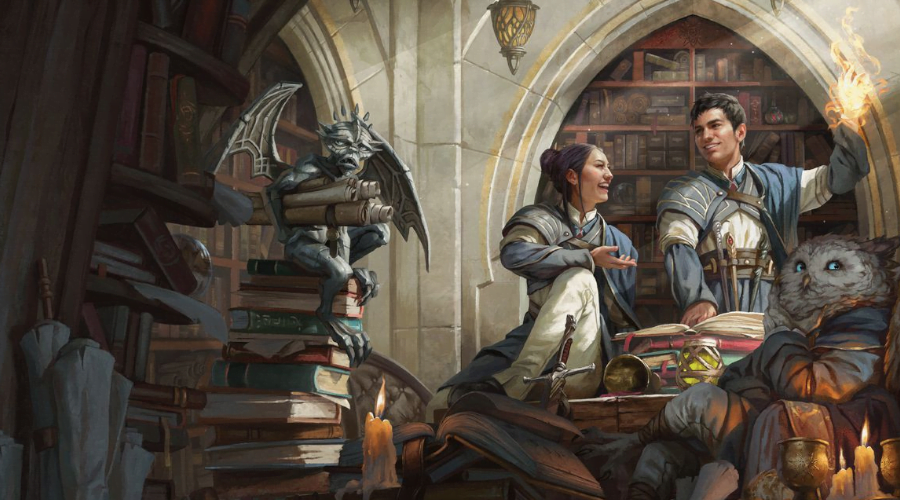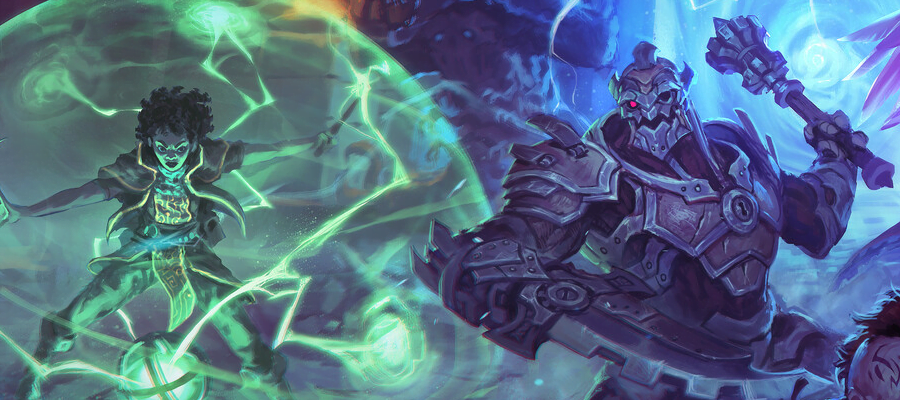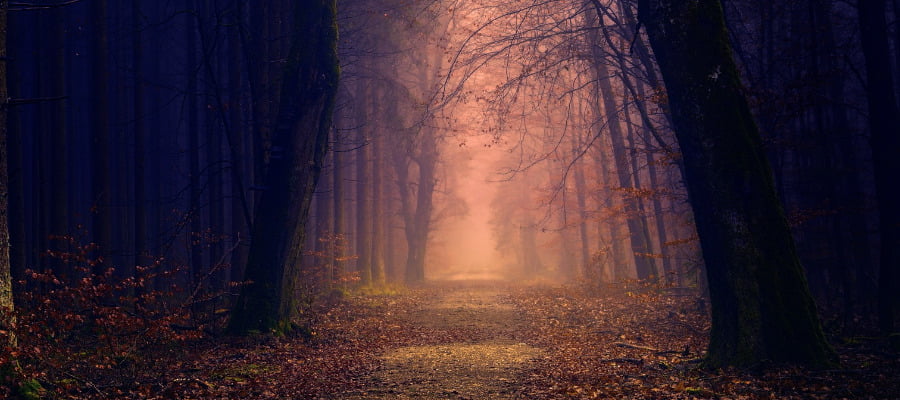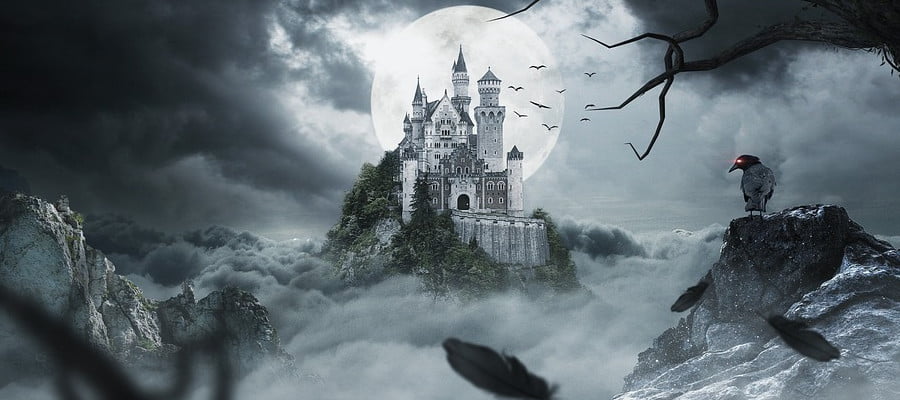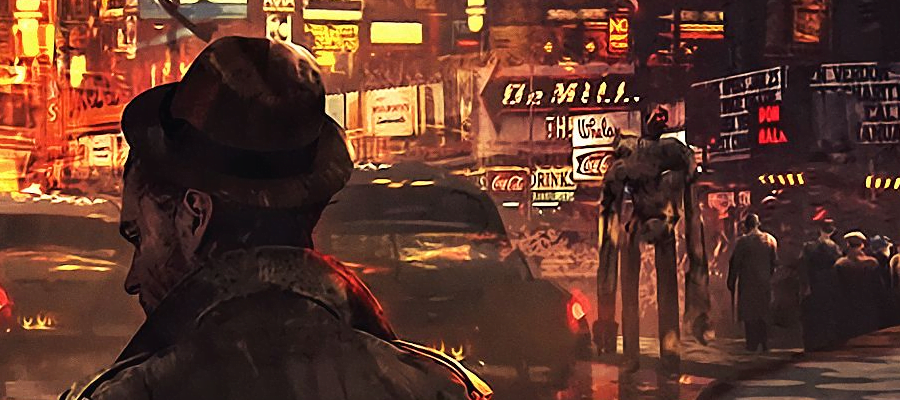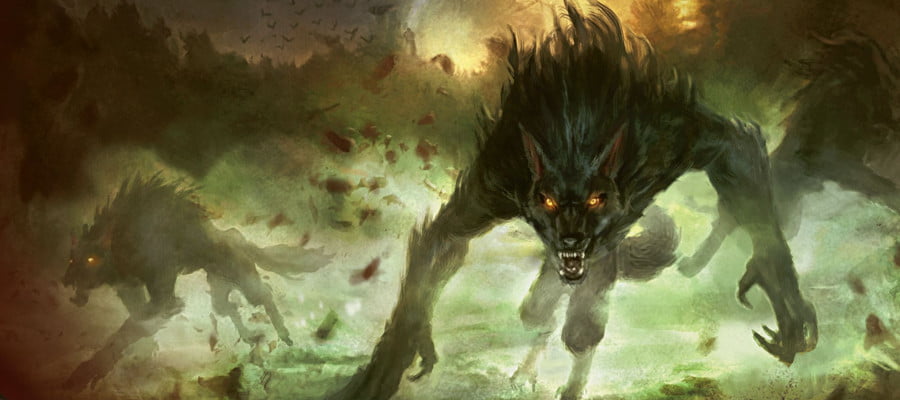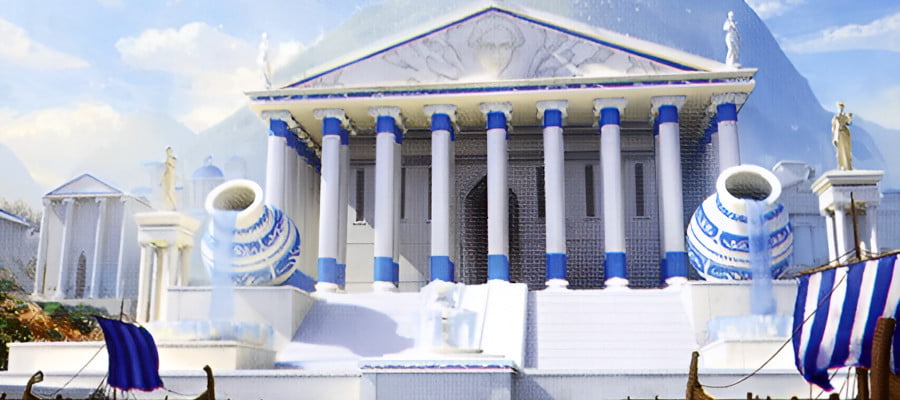The Laewaes Dramaturgists
Arcane magic represents the most important discipline available to us in which people across all the world can come together to share our notes and experiences in order to construct a vision of how this system functions that is coherent and precise and replicable and also probably in some way, fundamentally wrong.
Archmagus Laewaes I
Look I just want to tell you about a cool adventure site and backstory hook from Cobrin’Seil that’s about something I care about a lot recently, which is a university system in-setting. It just takes a bit of a walk to get there because it involves understanding Arcane magic and how it differs from Divine magic, Primal Magic, and Psionics in the setting.
Continue Reading →Hecsenfore, Part 2
This article builds on the previous two articles about the formation and lived culture of the necrostate city Hecsenfore, in the setting of Cobrin’Seil. If you have questions, it’s probably answered there, to start with, and this article just jumps straight into describing more of the districts of the city and what life is like in them.
Continue Reading →Hecsenfore, Part 1
The previous article involved a long form discussion of the history and potential formation of a necrostate that could, hypothetically, in the future, integrate with the Eresh Protectorate. With all that preamble out of the way, this article presents the first part of the long-form writeup of the city state that is known by its name:
Hecsenfore
Coastal heavily urbanised independent city-state, The Land of White Ravens, the Graveless State, The Internal Labyrinth, The Obsession, The Eresh Outcast
Continue Reading →Hecsenfore, A Necrostate in Principle
There’s this quote, from The Great Dictator:
To those who can hear me, I say – do not despair. The misery that is now upon us is but the passing of greed – the bitterness of men who fear the way of human progress. The hate of men will pass, and dictators die, and the power they took from the people will return to the people. And so long as men die, liberty will never perish…
So long as men die, liberty will never perish. This is an idea that works for a variety of places to represent bad rulership, to show undying and unrelenting leaders. In Cobrin’Seil, I use places with undead rulership enough to give them their own technical name, that of a necrostate. A necrostate refers to a polity in which the ruler or ruling class is represented by the dead. In the real world, there is an extant necrostate (North Korea), but that’s ceremonial, in much the same way that a theocracy doesn’t need a real god to exist for the power to be situated in the hands of religious leadership.
But where dictators do not die, where the ruling class do not naturally cede power as human structural limits, can you form a reasonable, tolerable, culturally diverse and stable necrostate? How does something with an immortal, predatory ruling class get created and managed in a way that still creates a place where the people who live there are not in danger of permanent loss of life or exploitation, and what can sustain this kind of place over time? Is it possible to create a necrostate that, at least in the context of social and political structures, is not worse than places with things like noble orders?
What does that look like, and how do we get there?
Continue Reading →Goblin, Vandal, Sugg
Every word you’ve ever used comes from somewhere. The structures you use to discuss ideas is informed by ideas that came before it. I’m not getting all Sapir-Worf about this (and if you don’t know what that is, you don’t have to know because it’s probably not true), but rather wanting to draw your attention to the way the world you live in is in part defined by the words you use. If you’re an English speaker, there are ways you describe food that are a byproduct of French invasion centuries ago. Words like ‘technocrat’ and ‘hyperspecialised’ are constructions that borrow from how intellectuals used to use Latin. Your swear words are almost all from the poor working class, and used to describe sex, god, or excrement, and that’s not how all swear words work in all cultures!
Your world shapes your language.
In any given fantasy setting you work on, you don’t usually have the same linguistic history to justify why the people there talk like we talk now. In fact, to be completely fair, they probably don’t talk like us at all: you have fantasy languages, across fantasy constructions. Any given phrase a character in your world says is probably not using the exact same words as we are and we’re all working with a sort of fictionalised fantasy that makes the concepts reasonably translate across.
There’s a whole treatise then about how we handle Native American names and loanwords that we italicise like etouffee.
Point is that you have words, in your world, and you can attach stories to them. You’ve probably seen me talk about Orcs and how they relate to language and stereotypes, along in my long post on the word ‘Orc’. Here’s another set of examples I like for my world of Cobrin’Seil, as they pertain to the best little evolved raccoons, the Goblins.
Continue Reading →‘These Two Provinces Should Kiss’
Let me talk to you about Cobrin’Seil, a big country, a big war, and something gay.
Continue Reading →Iron Hearts And Minds
When I talk about Cobrin’Seil and the people who live there, I do it in the context of I guess a kind of worldbuilder who wants to present heritages as whole sapient people who exist in a world and relate to that world materially. ‘A Wizard did it’ does not satisfy me. I do not like entirely magically sustained cultures, and I do not like the idea of cultures that have a singular personalised focus. I treat the heritages as if they have cultural stereotypes, which are based on interactions and communities, but I try to approach them as if they are creatures that exist in a world and interact with that world.
This approach is great when I’m starting out and filling out the broad spaces. What are humans? What are the things related to the humans? But the thing is, in D&D, character heritages aren’t just a worldbuilding entity, they’re also player pieces, mechanical objects that players want to interact with. They can range from important for entirely mechanical reasons (hi there, Dragonborn and Dwarf), or because of cultural prominence.
In this category fall today’s three examples: The Minotaur, the Warf*rged and the Giths. And I want to give a bit of a talk about what they are in Cobrin’Seil, but also, why players see them, and what that means for the world.
Continue Reading →Corrindale: A Place For Places To Happen In
Hey, what’s in the Pacific Ocean?
Continue Reading →The Origin Of The Word ‘Orc’
The term for a cultural group, as a name, is its demonym. In Cobrin’Seil, demonyms are words from the culture in question. There are some political contentions there – the Eladrin consider themselves more legitimate Elves than Elves, but Elves are called Elves and Eladrin don’t call themselves Elves because they do not want to be considered the same thing as Elves. This is a long standing beef between the kind of people who own libraries older than most countries. But notably, these words are in the languages of the Elf and the Eladrin. Drow is a word from the same language group, a term that the Drow chose for themselves and use for themselves. The Kai of Shadar-Kai are named after their fortress home, which is, again, an Eladrin word, but they’re all from the same cultural group and choose the term.
The term ‘Beast’ in common comes from ‘Beastfolk,’ which is to say a generic term for a scary thing from the forest. But Beasts are named after Beastfolk, and Beastfolk, again, named themselves. The Beastfolk formed a coalition, made a common language, and then shared that language amongst themselves, developing the term bhehst which evolved over time to Beast, and when they needed a term to describe the coalition, Beastfolk was the result.
Common did not impose this name on them, it learned it from them.
Consider the word ‘Goblin’, a word from the Goblins, is notable because the way the word is used and structured, in language, it’s a possessive. Whose land is this? Goblin. Where are we? Goblin. Who are you? Goblin. What are your people? Goblin. This incredibly flexible term, with its overwhelming ubiquity, also plays into the way goblins are perceived as speaking a strange and confusing language. It’s more that they have multi-purpose words are build their language on trust and social intuition. This is why Goblins will often drop a conversation exactly when they know you’re getting frustrated, because they can tell you don’t actually care and need time to process what they said.
In Cobrin’seil, heritage names are largely entirely self-chosen demonyms. Oh sure, there are names for Orcs that Orcs don’t use, but those words are largely considered slurs, or are often inexact – Bugbears, Hobgoblins, Goblins and Orcs were all for a time treated as the same culture and named interchangeably by outsiders who did not interact with them (which means some of these ideas remain codified by the Eresh Protectorate and Dal Raeda histories). A proper cladistic chart can rejoice in how interesting it is that yes, Bugbears and Hobgoblins are extremely closely related, and yet Hobgoblins and Goblins are so distant as to be functionally alien to one another. Humans are closely related to Hobgoblins, but not to Goblins, and Orcs, while closely related to Humans, are extremely different to Hobgoblins, such that they don’t even recognise one another’s common cause.
And if you think Humans are racist against Orcs, you should hear what Hobgoblins think of them sometime.
But what is an Orc? Not culturally – linguistically, what is an Orc?
Continue Reading →Player Characters Of the Szudetken
Oh yeah, I talked about the Szudetken, right? That peninsula that’s bigger on the inside than it is on the outside, and is full of these awful horror-inspired daylight-horror Christian ideas, with a dash of Bloodborne and The Locked Tomb for players to work with. But how do players interact with them? Especially with no mechanical information?
Well, that’s what this lengthy mechanical article is about. Yes, two thousand words of just ‘different perspectives on living in these cursed places.’ It’s not going to have a dramatic conclusion, it’s just character options. Note that these aren’t the backgrounds you get in the Szudetken. You can be an Artisan or a Merchant or a Military background character from all across the Szudetken: those backgrounds still show up just fine. These backgrounds just represent some of the more prominent experiences unique to these specific parts of the Szudetken.
Also, these backgrounds are presented as a way to try and give you, the player, a vision of what life is like when you have this background. Things that are familiar to you and normal to you, and what big, prominent things that are normal to other people aren’t necessarily normal to you.
Where a Background says ‘Associated Skills,’ that means you can choose for those skills to either be added to your class skill list, or you can have a constant +2 bonus to those skills. When it lists a ‘benefit,’ that’s something else.
And now, on with tools for making a Szudetken character, which may be of use to you if you’re just… grabbing these cultures and dumping them into your world!
Continue Reading →The Worst People Unalive
For years now I’ve been holding back on penning this description of one of the worst places in Cobrin’Seil, and only because it’s the worst in a different way to you’d expect. Oh it’s a tightly controlled city with a gaggle of liches trading favours at the top making the whole place a necromantically controlled undead polity, but the real problem the city has is its housing rates and fad technology bubbles.
Welcome to Uxaion.
Continue Reading →Piton, Jura, Carpathia, Northumbria
You hear the term, in most any discussion of the nations of Cobrin’Seil. You’ll hear the phrase The Halfling Trade-Ships, or sometimes, Halfling Hulks. They’re a feature of the world and its politics, something so important that cities care about them, even though they aren’t, officially, part of that country at all.
The experience of the Hulks is pretty standard. Depending on which port you are in, wherever you are in the world, every few weeks or so, or perhaps once every few months, a single vessel cruises into the port, parks in the harbour in a space set aside for them, and spends a week completely unloading, then reloading up. These giant boxy vessels are often described as a totally different kind of ship to other vessels on the sea. They’re larger than even the largest naval ships, and they command small armies of people to manage and maintain, and all that money, all that profit they make just moving things from port to port, just sits in what, great and dreadful vaults, owned by ‘The Halfling Trade Houses.’
It’s more complicated than that.
Of course.
Continue Reading →The Sporekin
The term ‘Sporekin’ refers to any of the number of humanoids who can symbiotically link with and connect to the forest known as the River of Madness from the nation of Mosetto. Officially, the efforts to contain this forest are absolutely successful and there’s no growth from the forest outside of the ravine, and there are no people living in there – only dangerous plant life and symbiotic living-seeming things from inside the forest.
There’s nothing in the River to worry about and the whole affair is contained.
What do you mean you’ve seen people coming out of it? You must be mistaken. The spores cause madness, after all. Do you need to sit down? We can take you in for medical examination. Anything in the name of containing the River, you know. No? Then you best stop with these rumours.
Continue Reading →Skyjacks and Sporekin
It’s a growing concern when I write about the world of Cobrin’Seil that I’m creating a vast and sprawling set of locational information that is not interesting for a player to engage with and not detailed enough for a world nerd to truly love. Part of it is really that I’m filling out a map, and each place I fill out, I want to be both a real enough place with an economy and a vision of everyday life, and yet I also want each country described to be its own place with a reason for it to be its own place. When there are multiple countries that are like one another in a reasonably close proximity, Europe style, I tend to think of them as ‘provinces’ of a larger body politic.
What’s more, I feel like I know what I like to see in a Nation writeup but I also know the things I need in a Nation writeup. A Nation writeup is a hook, a place to belong, and I want you to give me ideas like how my life as a person in that space might be a thing I can feel and inhabit. A Nation writeup is also a thing a DM needs to be able to check for useful data with signifiers quickly, because it’s a place to come from but also a place to go to. Basically, it is a dessert to consume but there are vegetables to have first.
Presented in a book, I know that I’d be presenting a big splash graphic, with sidebars, and mechanical references in nice formatted popouts. Not so here, where the only visual material I can generate is either icons, stock art, or morphed/warped pictures of similar locations from the inspirations. The rest, all I can do, is with words, words, words.
Come with me to learn of Motesso, the Skyjacks, the Sporekin, the Citadel Ironsky, and the River of Madness.
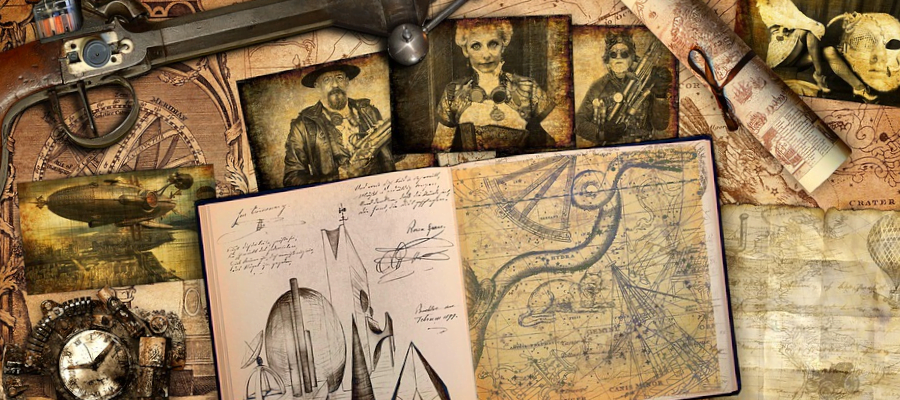
Werekin in Cobrin’Seil
Cobrin’Seil, being a magical setting of my own devising, has its own range of shape-shifting creatures known for various titles of ‘were-something.’ Werebears, weregoats, wereboars, all that kind of thing, grouped together under the community title of ‘werekin.’
The word ‘werekin’ comes from the Erd language, as do the phenomena of the werekin themselves. The actual condition is comparable to a kind of magical medical symbiosis; a bit like a long-term medical condition but not seen, generally, as a kind of illness.
Continue Reading →The Anvilgard
Yesterday, I talked about the city of Torrent, and the Doval monastery that it’s built around. Here is some mechanical information about how to make and play a character from Torrent, or, if you want, how to play an Anvilgard!
Continue Reading →When Eternity Is Your Strategy
Some cultures in Cobrin’Seil are nations. The Eresh Protectorate, with its connected string of city-states, boasts a half-billion souls across all its cities though if you believe the bookkeeping is another affair. Some cultures are very small — mostly homogenous little groupings like the Orcs or the Dio Baragh or the Gnolls. Even amongst those, there are large communities with thousands of members, from which adventurers can start their stories.
Some cultures are pretty small, though, and sometimes that size is a function of material concerns. The example today is the city of Torrent, nestled as it is around the Doval monastery. The material concerns are the town’s resilience against any kind of external authority, the city’s ready access to lightning powered magical technology, and of course, the way that a portion of the population are violently immortal.
It’s a bit of a conversation kick off.
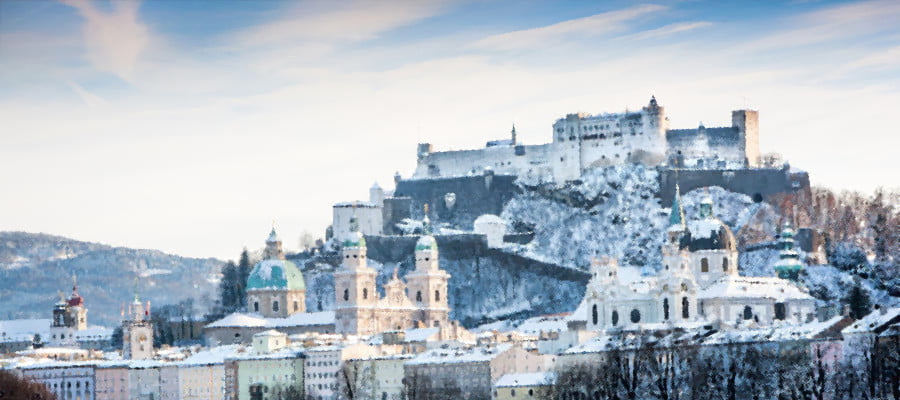
What’s A Gold Piece in Cobrin’Seil
The economics of D&D worlds are weird, and silly, and silly-weird. Normally conversations that start like this start out with talking about the way that adventurers’ economic presence in a town or city’s space is much like a small moon springing into existence with roughly the same kind of public safety impact. That is a perfectly fun conversation to have! Go ahead, make fun of the way that D&D writers don’t have any sense of scale.
I don’t wanna do that though.
Continue Reading →Queerphobia In Cobrin’Seil
Everyone in Cobrin’Seil is queer to any extent that word can mean anything in talking about my D&D setting. This is not because when you make a dude in that setting part of the character creation setting is ticking the backstory box that, at some point, he has sucked some dick or whatever, but rather is instead because Cobrin’Seil is a world where heterosexuality as you understand it was never invented.
And boy oh boy that right there opens a door, doesn’t it.
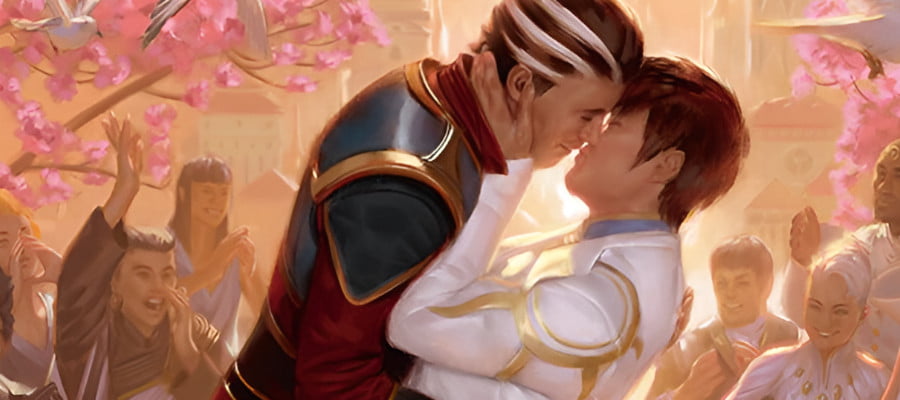
The Cow People
Who you are is often as much about who knows you. It’s possible, in Cobrin’Seil, for you to grow up on an archipelago of connected island city-states, with diverse food and music cultures, in a state that respects art for its own good, and ensures the widespread development of parks and proper protection of the seas, which creates great public artworks, and which even has the largest bridge in the King’s Highway running through it, and for you to live your whole life thinking that people must surely know your homeland as the place of elemental magic, physical duels that test the body against the body, and a theatre culture with explicitly fictional gods. What you wouldn’t necessarily expect is for your first dealings with outsiders to end with ‘Oh, the cow people.’
Such is the lot of the people of the sprawling island nations of Kyranou (pronounced kai-ran-ow).
Continue Reading →The Szudetken Empires, Part III
This is a continuation of the previous post describing the Szudetken Empires peninsula in Cobrin’Seil.
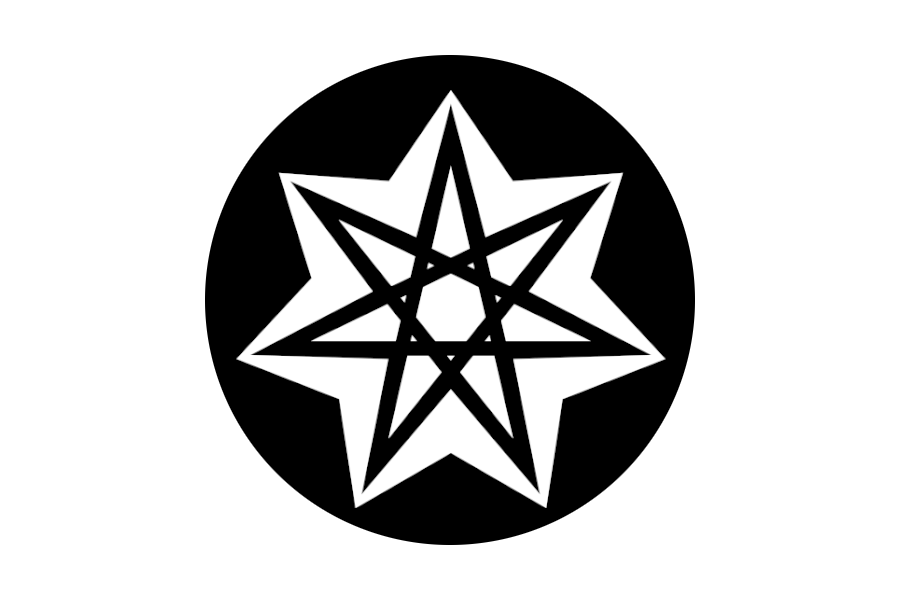
The Bernean Lodges
Where the forests weave in tight against people and farmland is hard-fought from its ownership, there are the night-time howling stands of the Bernean Lodges. Tall, narrow houses, with tightly angled roofs to slough off the snow and rain, the people of the Bernean Lodges isolate themselves from other communities, because they are keenly aware of the way that Szudetken is full of monsters that look like humans. In response to the threat of werewolves, ghosts, changelings, cultists and other horrors, the Bernean people opt to threaten and endanger almost everyone who moves around in their spaces,
Continue Reading →The Szudetken Empires, Part II
This is a continuation of the previous post describing the Szudetken Empires peninsula in Cobrin’Seil.
Voolfardisworth, The Glimmering Net
Where the land becomes mountainous, the castles of Voolfardisworth start to jut up on various cliffs and high peaks, overseeing inevitably, valleys of small communities beneath them. Sometimes known as the Fard, the Fooly or the Fanged States, Voolfardisworth is an aristocratic nation composed of many different, widely distributed noble houses that would rather you not admit they’re vampires (and may even do something to make it so you can’t).
Continue Reading →The Szudetken Empires, Part I
The largest single nation on the Cobrin’Seil continent of Bidestra is Dal Raeda. That is, at least, for those who measure around the edges of the nation, following its perimeter along each distinct shape, and measuring out the distance there. Of course, this does not accommodate for a measurement where an observer takes the furthest points of the nation, at all of its edges, and maps the space that contains; if one measures by that means, then obviously the largest nation on the continent of Bidestra is the Eresh Protectorates, a set of city-states strung out like beads on a string across the King’s Highway. A box, drawn to contain all of those cities, thanks to their distance between one another, could almost contain the entirety of the continent. A third method of measuring exists, where one looks for the area dictacted within the boundaries of the land mass, and composites together that space, such that deep canyons and tall mountains can exert influence on the scale of the nation.
By this metric, as uncertain a measurement as it can be, then the largest single nation on Bidestra is easily one of the six empires that occupied the peninsula known as Szudetken (pronounced schoo-det-ken).
Continue Reading →Dredging Up Schmavenloft
In the maps of Cobrin’Seil, up and on the right someplace, there’s a place called Kryphaneos. Setting aside that that name is very close to The Kingdom Of Mal-Bad, Kryphaneos is definitely one of the signs of an unrefined worldbuilder’s ‘that’ll do.’ Kryphaneos was my all-purpose place for horror stuff, dark magic came from there, there was an ostensible kingdom with supposed capitals and places and purposes and that was all a thing but it was a thing that happened over there. Kryphaneos was very much a ripoff of Ravenloft, as written by someone who didn’t read any Ravenloft books — a kingdom of nothing but dark horror, divided up by foggy lines, where the most notable detail ever provided about it was that nobody wanted to be there.
As time goes on and I keep trying to refine these ideas I meant to write down someday, I figured it was time to confront this space of grim and dark horror, and write down what I wanted it to be. But this isn’t that, this isn’t a writeup of the place, as much as it is instead, a consideration of what I want that place for. What do I want to have in this part of the world, and why do I want it to be different to just any old existing space.
Basically, if I have an Evil Country, why do I have it? What’s it for? And why is it there, and most of all, does answering those questions make my world a place that sucks to exist in?
Continue Reading →The Beastfolk, As People, Part 2
This is part three, effectively, of a long form examination of the political coalition of the Beastfolk of Cobrin’Seil – which is basically ‘how furry can I be in this setting, conveniently?’ The answer, broadly, is ‘pretty furry,’ with things like werewolves and werebears available, but also, this is where you get rats, monkeys, dinosaurs (I made mistakes googling ‘anthro raptors’ for this article) and of course, the vitally important presence of bnuy.
Continue Reading →The Beastfolk, As People, Part 1
I talked about the origin of the term beastfolk in Cobrin’Seil, and how it represented a political coalition of different people whose shared commonality was the origin for the term beast. What I didn’t really talk about there, though, were the actual cultures that made up that grouping, and what kind of options you have presented to you as a player, nor really what those cultures meant in their place in the world. Plus, in the overview of the Beastfolk, I kind of gave a list and that got me thinking about the cultures as a whole.
And well, I like talking about the cultures in the world of Cobrin’Seil. I like talking about their peculiarities, and about ways to encourage players to see their place in the world, and about the spaces they create by what they imply.
So then:
The Beastfolk of Cobrin’Seil, more or less, as worldbuilding entities, with an important detail about how to consider them as a player.
Continue Reading →Us Beastfolk
I am of the opinion as a designer that D&D settings are more interesting when you consider the diegetic language of the setting, and that language is best served when you do not pre-emptively position players to be racist. It may sound like a lot is loaded into that, but, as I’ve said before, consider the term ‘halfling.’ In the context of a universe, that term is almost certainly a slur, if it’s not a term chosen by the people themselves, since it positions them entirely in their relationship to the other, larger people saying that term. If the term ‘halfling’ is to not be a slur, it needs to be a term the halflings use, and then the question follows: half of what.
I’ve talked about this at length in the article on the halflings, and now we’re moving on to another term that players are going to need that I want to try and make sure isn’t a term that naturally implies every character speaking naturally is a bit racist. That term is beastfolk.
If you’re not familiar, beastfolk is a term used in a lot of D&D settings for ‘furries and near-furries.’ It’s for your anthropomorphic animals, but also for humans with some animalian traits. Often these traits need to be centered around the head; for example, Raptorans are kind of more like elves with wings, but despite having wings and talons, they’re generally not seen as ‘beastfolk.’ In a lot of ways, it’s about the face.
If beastfolk is a term the default observer imposes on the group, then that brings with it ideas of colonialism, the idea that the group doesn’t have a way to centre their own identity, and they didn’t get to choose their own name. That sucks. But on the other hand, I don’t think it’s a great idea to tell the players ‘okay, you know this term that’s in the game books and is in the fiction and is definitely a simple handle for what you, a human, can definitely use to describe these nonhumans? you need to stop using that and now use a more complex term that’s probably not as good.’
No, the solution, in my mind, is to come up with a story.
The story of why the beastfolk call themselves the beastfolk.
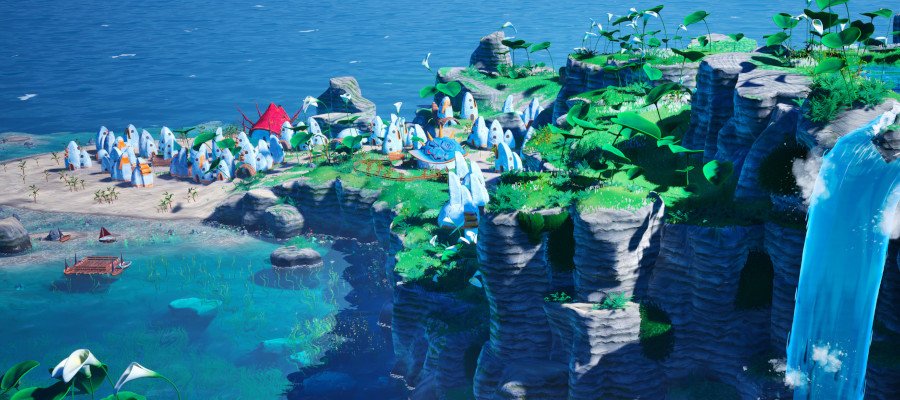
The Glimmering Spires of Visente
Cobrin’Seil is a place with culture, a place with languages, a place where people make books and exchange culture and share popular media just like in the real world. Places have their styles and preferences and they absolutely have their own trash. Trash novels, for example, cheaply made on pulpable paper, are traded around in bulk between different cities, and a surprising number of them, the really cheap ones about sleazy sex and dangerous romance? Chances are they deal in the stereotype of the glitzy and hedonistic lifestyles people imagine is common in one of the glimmering cities of Visente (pronounced vy-zent).
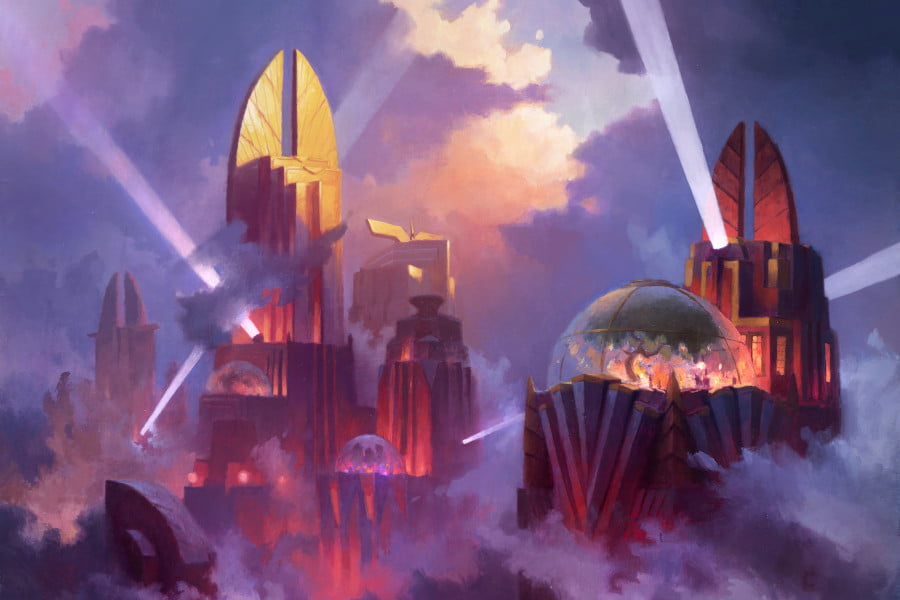
This is going to be a nation write-up! If you want to read the structure, and how it’s to be used, here’s the link to the structure. I did use some resources to help me build this and get over the things I find the most difficult. Particularly, I punched ‘random city name generator’ into duckduckgo and got this link, and the art that informed the concept is from the Streets of New Capenna set from Magic: The Gathering.
Continue Reading →The Circle Highway in Dal Raeda
Okay, hit the ground running fast: In Cobrin’Seil, I had a quandrary to solve. I knew that Dal Raeda (Big Irish-like Empire) has a section of the King’s Highway in it. This presented a problem, because Dal Raeda is a peninsula, and to have the highway in it would require that highway to connect two parts of the Eresh Protectorates. That meant the only options are:
- The Eresh Protectorate don’t build their highways between their cities and might build one into Dal Raeda for convenience, which I didn’t like
- There’s an Eresh Protectorate city inside Dal Raeda, which would be politically surprising
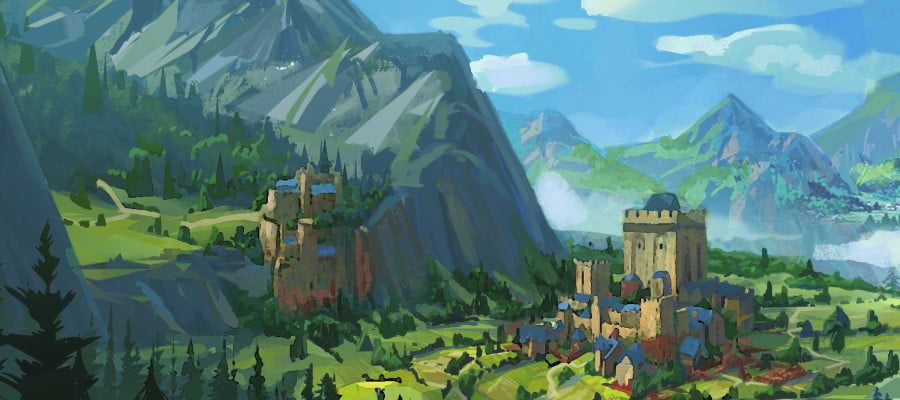
What follows here is the story that flows from addressing that question and thinking in terms of how pieces of infrastructure get built and maintained.
Continue Reading →A Giant Paradigm
I’ve talked about the Goblin and Kobold cultures in the context of Cobrin’Seil, and done some fairly deep delves into what I think of as the framing context of the other player character options, but the thing is, when you start looking at these cultures as like, cultures, you kind of run into a problem.
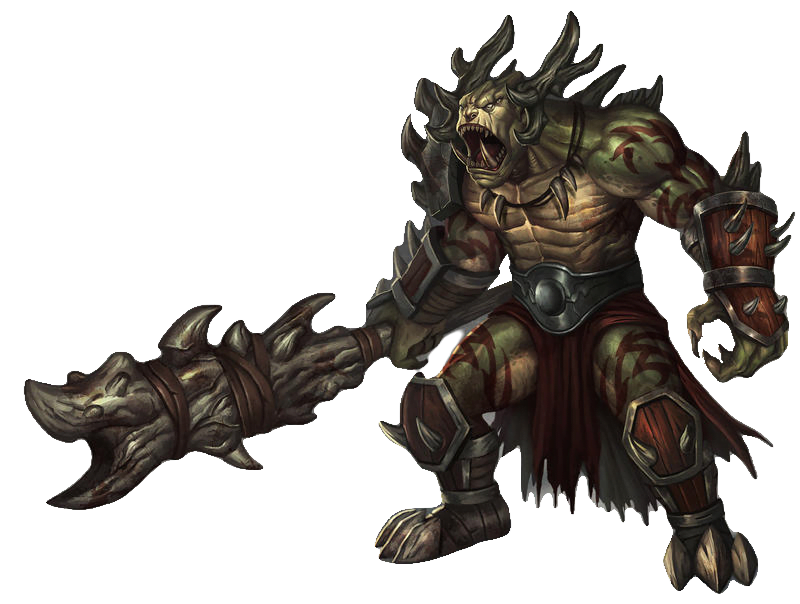
See, like if Goblins and Kobolds and Orcs merit that deeper context, then that kind of brings up the question of what about gnolls? What about grimlocks? What about derros, and tareks and hobgoblins and bugbears and shifters and duergars and bladelings and —
Continue Reading →The Meat Invasion of Glotharen
I speak of Cobrin’Seil in terms of its people and their homes; this means that more often than not, I am talking about cultures and cities; so many features that are large and inexplicable are usually only mentioned when they are cities, like the Dragon Palace of Amenti. I sometimes feel that this means that the image of Cobrin’Seil, as a world, is that it’s a place where you spend your time engaging with civilisations, of negotiations between people, and it’s not really a space where you can just go out in the wilds and get into a fight.
On the one level, good. I don’t need a roaming empty wild space with dozens of underdeveloped weird humans like Bullywugs and Goblins and Frost Goblins and Bugbears and Hobgoblins and Orcs and Pistos and Half-Orcs and Gnolls and Greenscales and Kenkus and Shifters and Lizardfolks and Grimlocks and Orogs and Tannaruks to fill the world. I’d much rather make cultures that have a lot of variety rather than a few dozen things that are meant to be fully sentient humanoid creatures living their lives. Like, yeah, some of these exist, but they’re not the default thing you find when you wander off a path, just having a culture out there without ever being noticed.
This can create the feeling that out there, in the world, there’s just nothing you haven’t seen before in a city. That’s not true; setting aside that almost any given city doesn’t have the same people with the same reasons for being out there, there are also places with things out there, sites and zones that present mysteries.
For example, there’s a forest that’s slowly turning to meat.
